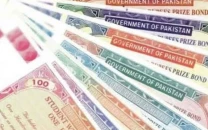The Shahtoot Dam
Afghanistan and Pakistan must, therefore, urgently start paying attention to regional hydro-diplomacy

The writer served as executive editor of The Express Tribune from 2009 to 2014
Afghanistan’s President, Ashraf Ghani, is reported to have made it clear that improving water availability via dams is a top national priority, and it’s not hard to see why Afghanistan’s wells are drying up. A 2017 study by Afghan, German, and Finnish universities stresses that Afghanistan desperately needs better water infrastructure and water management.
It’s no surprise, then, that in the Chahar Asiab district of Kabul, on a tributary of the Kabul River, the Maidan, work is scheduled to begin soon on the Shahtoot Dam. The dam will hold 146 million cubic metres of potable water for two million Kabul residents and irrigate 4,000 hectares of land. It will also provide drinking water for a new city on the outskirts of Kabul called Deh Sabz.
But building dams on the Kabul River is said to be politically complicated; the Afghanistan-Pakistan border region is said to be defined by its complex maze of trans-boundary rivers and there is no legal framework in place to avoid major conflict between the nations.
And the development is said to be fuelling fears downstream in Pakistan that the Shahtoot Dam which is being funded and built by India will alter the flow of the Kabul River and reduce the water flows into Pakistan that could severely limit the country’s future access to water.
The Pakistani media has already reported that there could be a 16 to 17 per cent drop in water flow after the completion of the Shahtoot Dam and other planned dams.
According to the US Senate Committee on Foreign Relations’ 2011 report on water security in Central Asia, “Providing the right support by India (while constructing the Shahtoot dam) can have a tremendous stabilising influence, but providing the wrong support can spell disaster by agitating neighboring countries.”
A water-sharing treaty between Pakistan and Afghanistan could, it is believed, potentially limit the irrigation techniques used and the types of hydroelectric projects that can be built along the Kabul River basin.
Academics at a conference held at Peshawar University on “Challenges and opportunities for Pak-Afghan Cooperation,” warned the environmental consequences of the proposed building of a series of dams on the Kabul River which they said could result in “water diversion, water shortages, water wastages, water pollution, irrigation problems, environmental damage, floods, droughts, crop failures, socioeconomic complications, mass human migrations and the migrating seasonal birds.”
But if Afghanistan is to develop, it needs better ties with its most intimate neighbour, with which it shares not only a long history but also an economic future.
Afghanistan and Pakistan must, therefore, urgently start paying attention to regional hydro-diplomacy. The first step is to support “the gathering of data, which would be shared with all neighbours, and potential scientific forecasts of the planned dams’ impacts on water flow. Scientists need to be involved with international diplomatic and scientific support. This would inform all neighbours of the dam’s potential impacts.”
This is a verbatim quote from an article (Afghanistan’s rivers could be India’s next weapon against Pakistan, published in Foreign Policy magazine on Nov 13, 2018) by Elizabeth Hessami, the visiting attorney for the Environmental Law Institute, researching post-conflict natural resources management with a focus on Afghanistan.
According to Ms Hessami, with effective hydro-diplomacy, tensions could be addressed peacefully. “An Afghanistan-Pak Water Treaty could be modeled on the Indus Waters Treaty, which has survived two wars, dozens of skirmishes, and continued bitterness.”
Published in The Express Tribune, December 15th, 2018.
Like Opinion & Editorial on Facebook, follow @ETOpEd on Twitter to receive all updates on all our daily pieces.





1729685382-0/Untitled-design-(57)1729685382-0-208x130.webp)









COMMENTS
Comments are moderated and generally will be posted if they are on-topic and not abusive.
For more information, please see our Comments FAQ